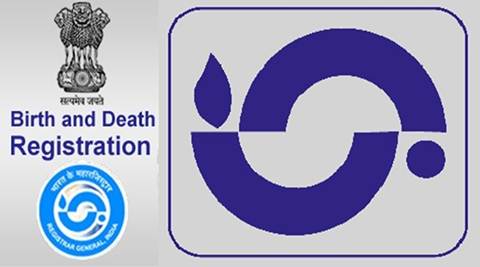Context: Recently, the Office of the Registrar General of India (RGI), under the Ministry of Home Affairs, has issued a circular directing all public and private hospitals to report births and deaths within 21 days. This was in response to the persistent issue of under-reporting of births and deaths.

Registration of Births and Deaths in India
1. Legal Framework
The registration is governed by the Registration of Births and Deaths (RBD) Act, 1969.
The Act is administered by the Registrar General of India (RGI).
2. Implementation Mechanism
The Civil Registration System (CRS) is the administrative framework used to implement the RBD Act.
CRS ensures timely and uniform registration across the country.
3. Registration Process
Timeframe: All births and deaths must be registered within 21 days of occurrence.
Hierarchy of Registrars:
Local Registrars: Appointed by state governments at the village, municipal, or ward levels. Responsible for:
Registering events.
Issuing certificates.
Chief Registrars: Appointed at the State/UT level. Responsibilities include:
Supervising registration activities statewide.
Coordinating with local registrars.
Registrar General of India (RGI):
Coordinates registration at the national level.
Publishes vital statistics.
Maintains the central CRS portal.
4. Role of Government Hospitals
Under CRS, government hospitals act as registrars for births and deaths that occur in their premises.
Registration of Births and Deaths (Amendment) Bill, 2023
1. Objectives
To modernise, digitise, and centralise the civil registration process.
2. Key Amendments
Mandatory Digital Registration:
All births and deaths must be registered through the central CRS portal.
Integration with Other Databases:
CRS data is used to update:
National Population Register (NPR)
Ration cards
Electoral rolls
Property registration records
3. National Database
RGI is empowered to:
Maintain a centralised national database.
Ensure real-time data sharing by Chief and Local Registrars with the Centre.
4. Legal Validity of Digital Birth Certificate
The digital birth certificate is the sole legally valid document for:
School admission
Passport application
Voter registration
Marriage registration
5. Penalties
Negligence or delay in registration attracts a fine of ₹1000.
Challenges in the Registration of Births and Deaths in India
1. Incomplete Registration
Nearly 10% of all births and deaths in India remain unregistered.
This undermines the goal of achieving universal civil registration, which is essential for accurate demographic statistics and inclusive governance.
2. Delay in Publishing Vital Statistics
The Vital Statistics of India report has not been published since 2020.
This hampers timely access to critical data for planning and monitoring.
3. Vital Statistics of India Report
Published by: The Registrar General of India.
Contents:
Aggregates vital statistics from all state governments.
Includes data on:
Infant mortality
Still-births
Deaths at the national level
Importance:
Essential for socio-economic planning.
Helps evaluate the effectiveness of social sector programs.
Forms the foundation of public health policies and systems.
